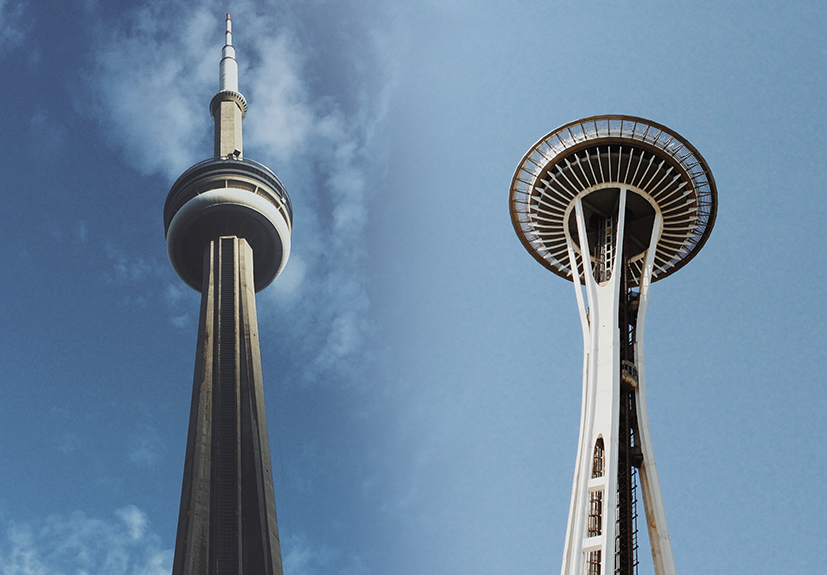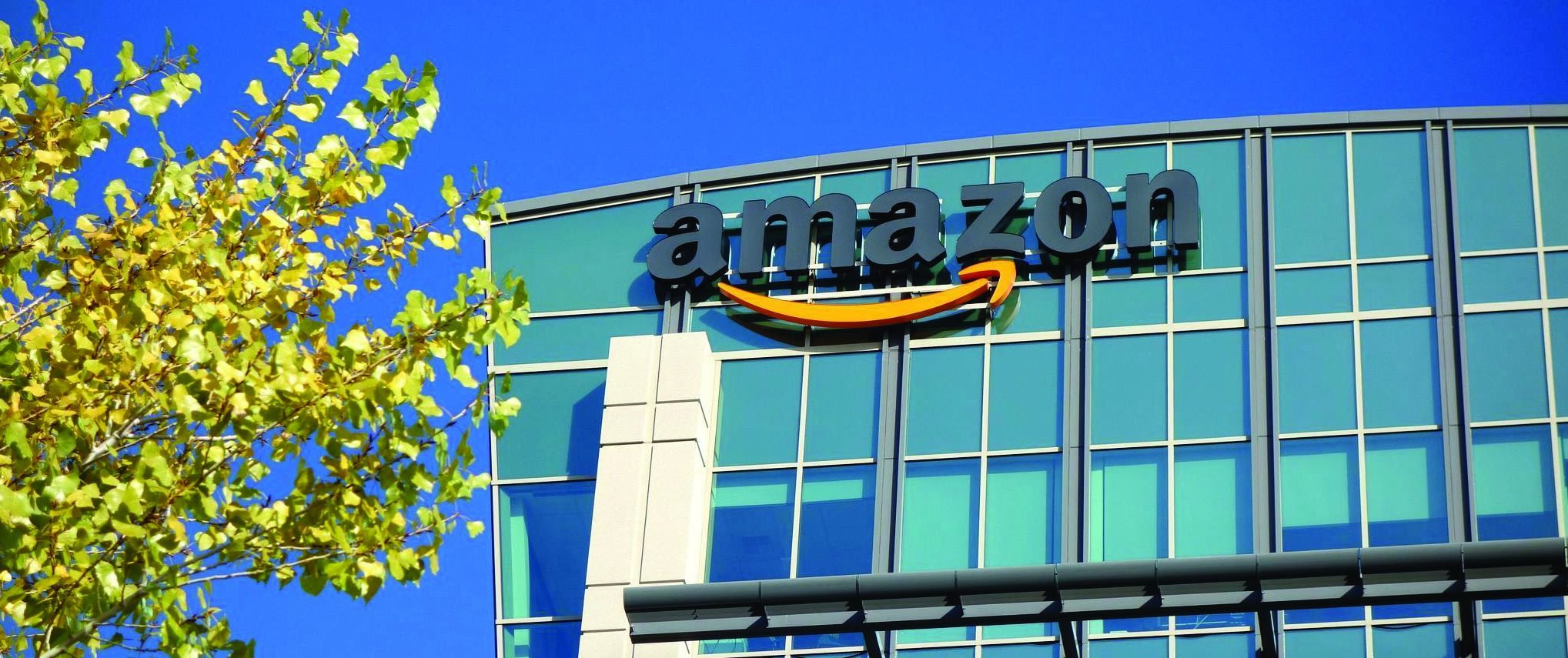Toronto residents might have to pay at least another $137 a year in rent if Amazon chooses the city for its second headquarters.
In September 2017, Amazon announced its plans to build a “sister” campus to its flagship headquarters in Seattle, prompting more than 230 cities across North America to submit their names for consideration. A few weeks ago, the short list of 20 finalists was released, and Toronto was named among the chosen contenders.
The retail giant would bring an influx of new and desirable jobs to the city—as many as 50,000 highly paid Amazon workers and an assumed 66,250 supplementary workers over a 10-year period. Exciting, but consider how this expansion would affect the city’s rental prices.

Toronto’s CN Tower on the left and Seattle’s Space Needle on the right.
Amazon HQ2 Increases Rents an Additional 0.5% to 0.9% Per Year
In 2017, the average rent in Toronto was $1,308. This includes studio apartments all the way up to three-bedroom units, and since 2006 the city has seen an average yearly rental growth of 2.2% over a 10-year span.
If Amazon chose Toronto as its new HQ2 hub, TorontoRentals.com predicts rents could increase by another 0.5% to 0.9%, resulting in annual rent increases of 2.8% to 3.1%. For Torontonians, that could amount up to a $137 increase in rent per year which would easily cover an annual membership to Amazon Prime—just saying.
This would be mostly driven by the influx of workers with wages higher than the metro median who could afford higher rents, especially given Toronto’s highly competitive rental market and record low vacancy rate.
The other factor to consider is the total housing supply available for the population growth from the workforce expansion, but as luck would have it, Toronto maintains a healthy ratio of new jobs to housing starts.
The projected rent increases would not impact the market equally — some neighbourhoods could see even bigger jumps depending on the final location that’s selected for the HQ. With Toronto’s record low vacancy rates, it becomes difficult to calculate the upward rise of rents. Of course, there would be no immediate impact for those properties that fall under rental control regulations.
The Impact of an Amazon HQ Has Been Felt Before
Since the first Amazon headquarters was established in Seattle, that city has also seen a rent increase of about 3%. However, the numbers did see a slight drop in the last month of 2017. According to data from Zillow, Seattle’s rents grew by 42% since 2010, which is three years after Amazon set up shop. By 2017, the median rent in Seattle was $2,203, up from $1,553 in 2010.
The cost of home ownership went up as well — according to a Seattle Times article published last August, Seattle at that time was leading the United States in home-price increases for the 10th month running. If the new Amazon campus is built in Toronto, the cost of renting or owning a home is likely to jump an additional 1 percent to 2 percent. This increase would be on a par with the one the city saw in 2009 — the highest since the turn of the century.
Amazon had a standard list of criteria for cities wishing to submit their proposals. It is looking for a major metropolitan area with strong job growth, an educated workforce, a good public transportation system, proximity to universities — and affordable housing.
Since an influx of well-paid workers is already known to drive up rent prices — particularly when demand outweighs supply — this will almost certainly happen if Amazon makes Toronto the home of HQ2 at a rate of about 3 percent or more for higher-end rentals.
To offset this rent increase, TorontoRentals.com believes that Amazon must get off on the right foot with Torontonians. The Internet retail giant could do this by investing in the local Toronto tech scene. Or, Amazon could just give residents free prime memberships!
If Amazon chooses Canada’s largest city for HQ2, Toronto could become one of the world’s largest technology and retail centers attracting more high-paying jobs. Other large tech and retail companies could follow Amazon’s lead and set up offices in Toronto.
And, yes, you guessed it, rents would go even higher, but along with growth and progress, pay increases should follow.
Methodology
To predict the impact of the Amazon HQ2 on rent growth in Toronto, TorontoRentals.com considers the major drivers to be the larger workforce and increased spending power this workforce would have.
We begin by determining the current ratio of new jobs created in the city between 2006 to 2016 to the total number of housing starts for the same 10-year period. This ratio jumps from 0.50 to 0.78 when we account for the expanded workforce Amazon creates (50,000 Amazon workers and 62,500 supplementary workers) and any expected changes in the housing supply. Our assumption is that the city will not see any major changes in policy that would boost the production of new housing.
We applied a regression formula linking the relationship between the ratio of new jobs to housing starts and rent growth across major North American metropolitan centers to estimate how an increased workforce owing to Amazon’s HQ2 would affect rents in Toronto.
We then calculate how the new workforce (with a higher median income) would affect the median income in Toronto. The current median income in Toronto is $32,000, which is considerably lower than the wages we would expect for the new Amazon employees. However, any changes to the median income would be tempered by the relatively large existing workforce, so the 100,000+ direct and supplemental new jobs Amazon would bring to the city would only make up a small percentage of the current population.
New rents with regard to the adjusted median income are projected by keeping the same income-to-rent ratio. Finally, the two figures are added together to get the overall impact of Amazon HQ2.




